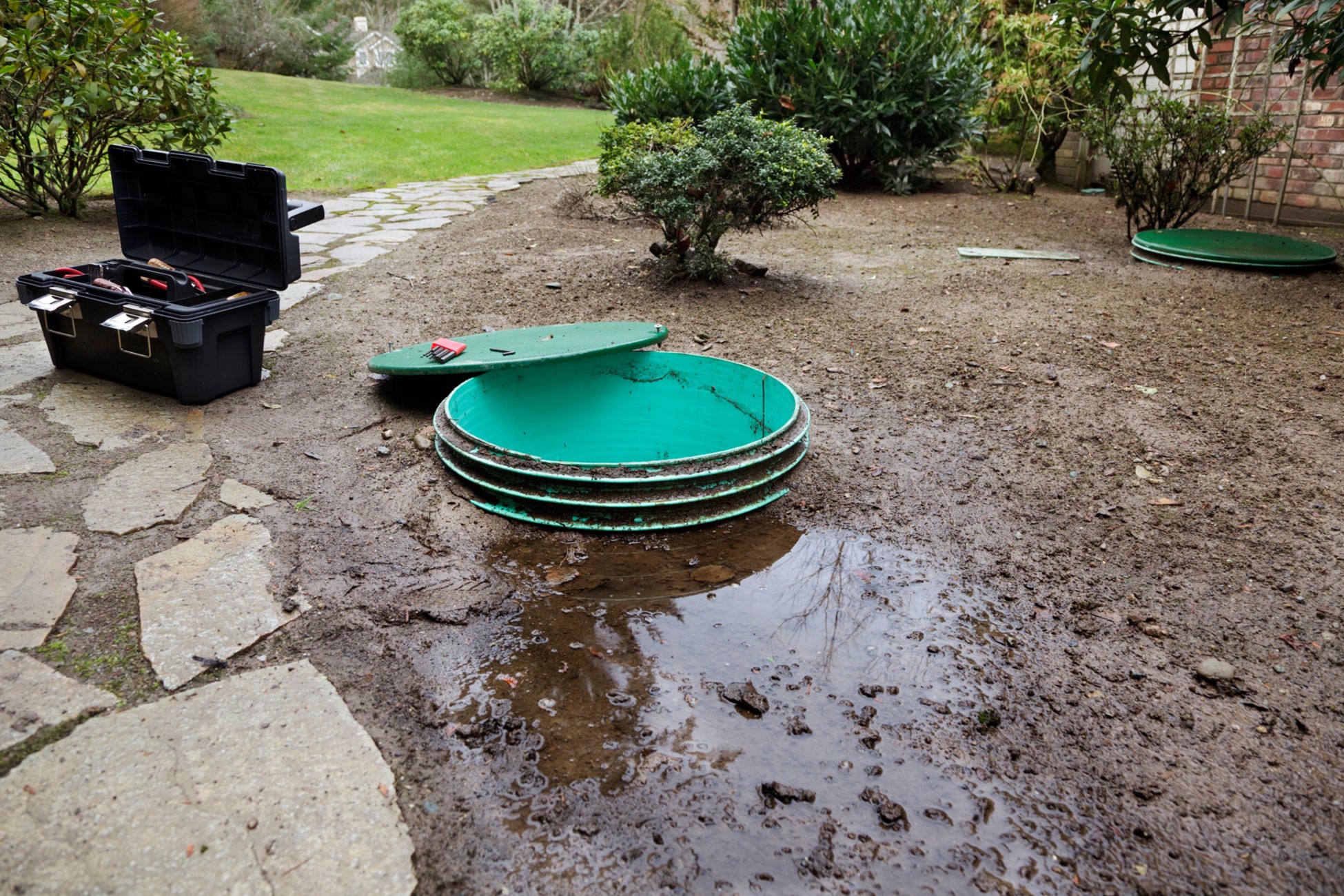A septic tank is an underground chamber made of concrete, fiberglass, or plastic through which domestic wastewater flows for basic treatment. Settling and anaerobic processes reduce solids and organics, but the treatment efficiency is only moderate. Septic tank systems are a type of simple onsite sewage facility. (Wikipedia) Every home is equipped to deal with sewage in one way or another and depending on where you live, you’ll either have a septic system or an attachment to the city sewer lines.
It’s important for first-time homeowners to know the difference because one requires quite a bit more maintenance and care than the other. You could end up spending a lot of money on plumbing services in your first year as a homeowner if you’re not prepared.
Here’s everything you need to know about your home septic system, including how it works and how to keep it running smoothly.
Never Skip A Septic Inspection
When considering buying a house that has a septic system getting a professional home inspection completed should be one of the first steps you take. By hiring an unbiased third party expert can help you understand what shape your system is in, if it meets current septic standards, and determine the longevity of the unit, it will also alleviate any immediate issues or concerns.
If your septic tank fails after buying a home without a professional home inspection then you could be looking at sewage backing up into your home and causing all kinds of damage.
The average septic tank installation in Ontario is in the range of C$3,000 – C$15,000, and requires an engineer to be onsite. Septic tank repair and replacement costs vary but to put it into perspective, a septic tank lid can cost you approx. C$100 – C$200.
How A Septic System Works
First, water flows from a home’s sewage line into the septic tank, the fluids will separate based on density with the grase, soap and suds floating to the top, creating a scum layer. Bacteria found in the septic wastewater will gradually decompose in an anaerobic process. While most of the solids will be broken down by this bacteria and the rest will be pumped out of the tank.
The size of your tank, and the number of people in your household are determining factors on how often your tank should be serviced. However, it’s recommended that you should pump your tank every 2 to 5 years, but refer to your septic service provider for a more accurate estimate.
The fluid will eventually filter through layers of gravel or soil and return to the natural water system. This is dependent on the type of soil, how well it absorbs water, and the location of your septic tank. Your entire drain field should be free of deep-rooted plants and left undisturbed, excluding lawn care and surface maintenance.
An article from Canadian Home Trends explains “Unpleasant odors around plumbing fixtures or around a septic tank or slow-running drains may indicate a problem with a septic system. The most common reason for system failure is from a build-up of sludge which clogs either the drain field pipes or the soil itself. Lush green growth or standing water over the leach field, even in dry weather, may indicate the water is not filtering downward fast enough, and may flow, untreated, into surrounding groundwater or wells. Drinking water wells should be tested regularly for nitrates and bacteria.”
Septic Tank vs City Sewage Lines
Homes located near bigger cities and municipalities can still be equipped with septic tanks, but for the majority these home will be on a ‘city line’
Here is a short list of pros and cons for having either a septic systems or city sewer to consider:
| SEPTIC SYSTEM | CITY SEWER | |
| PRO | Independence from community clogs and backups, less of an environmental impact, and lower initial cost.
Installing a new septic system is significantly more affordable and quicker than installing sewage pipes. Durability: A concrete septic tank can last up to 40 years. |
You’ll improve property value if your home is connected to the city.
Less maintenance since the local government handles the wastewater treatment on a shared sewer system. Sewer systems are designed to withstand periods of heavy rain and storms |
| CON | If not maintained, you can have a costly mess on your hands
Requires ongoing maintenance every three to five years Potential of ruptured pipes and backed-up pipes |
A city sewage line comes with monthly sewage and water bills |
The EPA septic system guide has information for local officials establishing septic wastewater management programs for those interested in learning more.
Habits to Avoid
A neglected tank can lead to health problems as well as backwash flowing into your house. Because a septic tank isn’t connected to the city’s sewer line, you have to be careful what you put into it.
Your system can’t handle much of anything other than human waste and toilet paper. Avoid flushing down cooking grease or oil, paper towels, and household chemicals. Even wipes marketed as flushable can clog up your system and lead to problems later on.
The septic system contains living organisms that help break down your household waste. Household chemicals can kill them, causing a collection of waste that’ll need to be cleaned out sooner. Using a high-efficiency toilet also helps to reduce the amount of water entering your tank.
What to Look For in Professional Services
There are a few things to consider before hiring professional home septic tank services.
- Do you have open access to the tank for the truck to reach it?
- Are you willing to lower the cost by digging an access hole to the tank? What services do you require?
Services can range from basic care to a full 50-point inspection of your system. Make sure you take the time and do research on local professionals so your septic system will last!
Want to Buy a Home with a septic tank in the Niagara Region?
Owning a home with a septic system doesn’t mean you’re stuck with an outdated system. In fact, you can save money by choosing a home with one installed. You shouldn’t have any problems with it as long as you do your regular maintenance and try not to flush anything unordinary down the drain.
Here in Niagara you’ll most likely see septic tank systems in the countryside and by viewing homes with our team you’ll always know every detail of the homes you view. If you’re interested in buying a house there or anywhere else in the Niagara Region, reach out to Davids & DeLaat.
We have the experience and client commitment to find you the best offer. Contact us today to get started on finding your next home.




